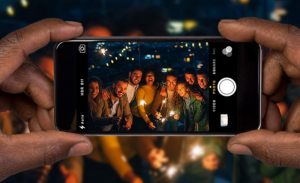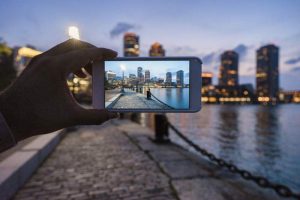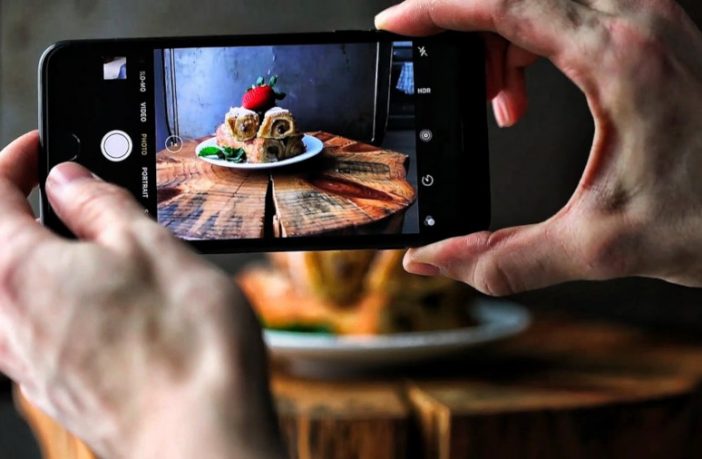Before the advent of smartphones, taking a good photo was a pretty labour-intensive process. First-of, you would have needed a rather expensive camera coupled with editing software for your desktop computer. Once you had the tools, you would also have had to invest some serious time and energy into learning how to use them. These days, snapping a high-quality photo is a whole lot easier, thanks to mobile phones and easy-to-use editing apps. And, with a little extra know-how, you can take your smartphone photography to a new level. So, if you’re looking to learn how to take good pictures using your phone, we’ve got you covered. Here are just a few easy tips to help you take better photos with your smartphone.
Get to grips with your device

While many think you have to invest in mobile phones with the best camera to get great shots, most mid-range mobile phones the days have pretty decent built-in cameras that are more than up for the task of helping you snap a great picture. The first step to getting a great shot using your smartphone camera is to understand your device. Spend some time learning and understanding the mechanics behind your smartphones camera and it will make a world of difference when capturing the perfect photo.
Small things like remembering to clean the camera lens before taking photos, or figuring out how to turn on a photo grid, will help to increase photo quality. Try turning your devices HDR (High Dynamic Range) in the settings to help your camera capture photos with more vivid colours and definition.
Follow the rule of thirds

The rule of thirds is incredibly important when it comes to ensuring your mobile phones photos are top-notch. This composition principle breaks down a photograph into thirds, both horizontally and vertically, helping you to balance out your photo more effectively. According to the rule of thirds, if you line up your subject along the lines or at an intersection your shot will seem more balanced and pleasing to the eye.
Turning on the gridlines in your camera app is one of the easiest and most effective ways to improve the quality of your mobile shots. Turning on gridlines will place lines on your screen based on the rule of thirds, helping you snap a well-balanced image.
Ditch the zoom

An image shot using digital zoom | Image Source: digital photography school
If you want to take a good photograph of something further away, forget using your camera’s zoom function, get closer to your subject. When you use your smartphone camera’s digital zoom, you lose a lot of fine detail. If you can, try taking a few steps closer in the direction of your subject to improve the quality of your picture.

An image shot close up | Image Source: digital photography school
Using optical zoom will help you keep photo integrity much better than digital zoom, but it’s best to stay away from zoom whenever possible.
Avoid the flash

In addition to avoiding the zoom functionality, you will also want to forget about your phone’s flash. If you want to take good pictures with your phone, you should forget about the flash. Using your phone’s LED flash leads to blurry photos, strangely lit subjects, and red eyes. If it’s dark and you want to snap a great photo, you’re better off finding another source of light.
If you’re in the streets, wait for a passing car’s headlights, or look for a street lamp to illuminate your subject. If you’re in a night club or dark restaurant, stand next to the usually well-lit bar. Once you’ve taken the photo, play with the “Exposure” tool in your favourite photo editing app to see if you can make the image slightly brighter, without making it too grainy.
If you’re able to choose your lighting, natural light is almost always better than artificial. If you are able to dictate what time of day you’re photographing your subject, then simply plan your shots better and take pictures with your phone while you still have daylight. If you do use your phone’s flash, only do so during the day. Sometimes, using your camera’s flash can improve a photo taken during the day. In already well-lit spaces, a flash can help to soften some dark shadows behind or beneath your main subject.
Use leading lines

Making use of natural lines in the environment of a photograph will help elevate your images to the next level. When used correctly, leading lines can help lead the viewer’s eye through the photo. Whether it’s a pathway in a forest, a fence, a road’s dividing lines, or the pavement, a prominent line can help you snap an interesting image. Using leading lines correctly can help your photo cut down on excess noise and establish a clear visual pathway to your subject.
Keep learning
The key to taking great photographs using your smartphone is to keep learning and practising. While these tips should help you on your way to taking better photos using your smartphone camera, there are many more photography tips and tricks that will help you make the most of your smartphone’s camera app. If you’re interested in taking your smartphone photography to the next level an easy guide, like Chris Gatcum’s The Beginner’s Photography Guide, will offer invaluable insight and a more in-depth explanation of the principles above.
If you’re looking to invest in a mobile phone with the best camera, shop online with PriceCheck for the best smartphone deals:





